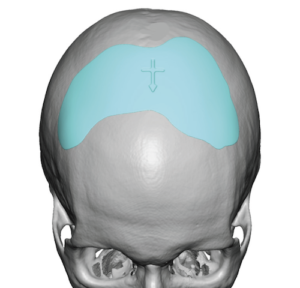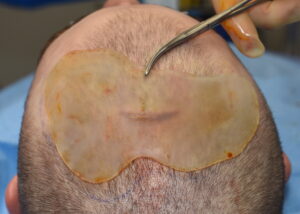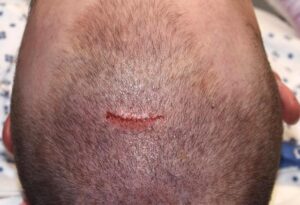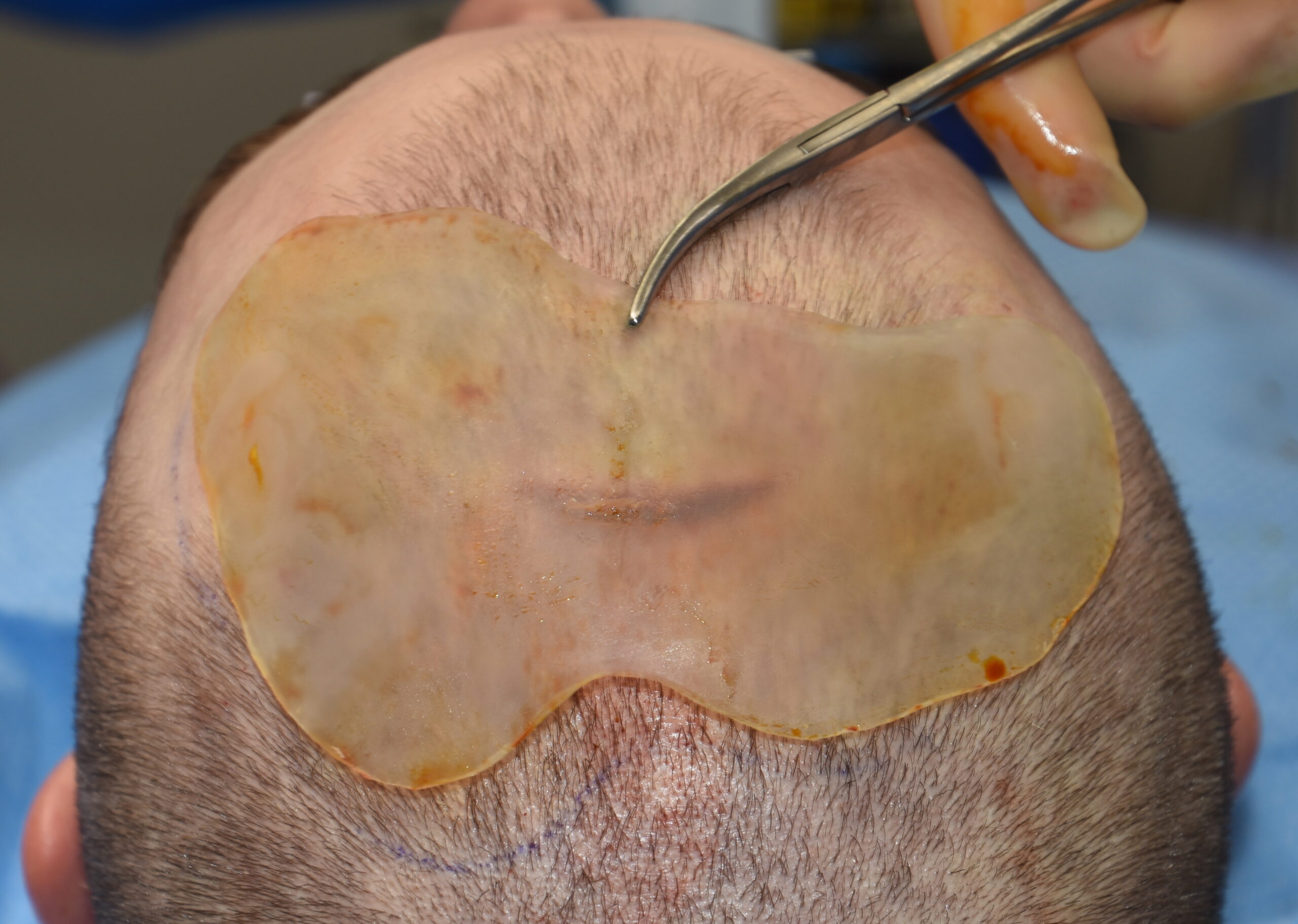Augmenting depressed contours of the skull can be done by a variety of materials. When placing any skull augmentation material the two key elements of importance are assurance of the desired contour and a limited scalp incisional scar to do so. It is important to differentiate reconstructive skull thickness restoration from aesthetic skull contouring. The former is re-creating the thickness of the skull and usually has a prior long scalp scar already present from the initial procedure. The latter is an onlay augmentation on normal skull bone that has no prior surgery or scar present.
As an aesthetic onlay augmentation material intraoperative moldable materials (cements) require long scalp incisions to place as they need open visibility to shape them into the desired contour. Limited scalp incisions for bone cement placement are associated with a high rate of contour irregularities. They may have a role in minor amounts of skull augmentation but not for contouring that involves greater than around 50ccs volume or roughly 8 x 8 cms in diameter of a few millimeters thickness. (under 5mm)

One of the most important aesthetic skull implant material properties turns out to be one that is almost the opposite of what most think it would be. It is not necessary to have an implant material that is as firm or feels completely like the bone that it is augmenting…this is a misconception. A completely rigid implant material is going to require a full coronal scalp incision to place which is exactly what a patient wants to avoid. In fact for many skull augmentation patients having a long coronal scalp scar would preclude them from having the surgery.


While the larger the skull implant becomes the larger the scalp incision needs to be, a good rule to follow is that the scalp incision can be lead than 1/2 of the implant’s shortest diameter.
Dr. Barry Eppley
Indianapolis, Indiana



